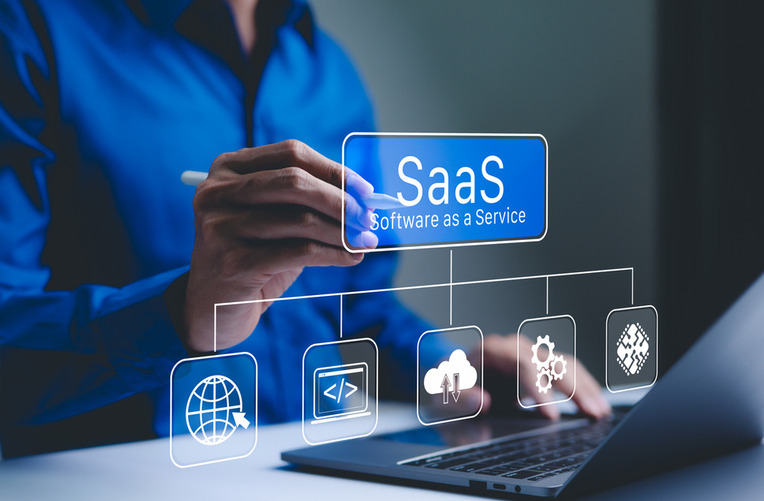
How Salesforce Pioneered SaaS—and How Adobe Perfected It: A Deep Dive Into Pricing Strategy for Modern Subscription Models
The Software-as-a-Service (SaaS) business model fundamentally reshaped the technology landscape. What began as a revolutionary shift with Salesforce in the early 2000s matured into a powerful, scalable engine when Adobe transitioned its entire Creative Suite to a subscription-only Creative Cloud model in 2013. Today, SaaS is the backbone of enterprise and consumer software, but few companies truly understand the pricing science needed to maximize adoption, retention, and profitability.
This post explores:
- How Salesforce pioneered SaaS
- How Adobe followed and successfully engineered one of the world’s most profitable SaaS transitions
- The pricing principles modern companies should consider to make SaaS models more effective
Salesforce: The Birth of SaaS as We Know It
In 1999, Salesforce broke away from the traditional “boxed software + annual maintenance fee” model and introduced something radical:
Software delivered entirely over the internet—no servers, no installation, no IT overhead.
This allowed Salesforce to introduce three key innovations:
1. Pay-As-You-Go Pricing
Instead of multi-year licensing agreements, businesses could pay monthly or annually. This reduced TCO (total cost of ownership) and improved budget predictability.
2. Zero-Infrastructure Deployment
Since Salesforce ran everything on its own servers, customers needed no infrastructure investment—ideal for small and mid-sized organizations.
3. Continuous Delivery
Rather than waiting for major version upgrades, customers received updates automatically, creating an “evergreen” product.
Outcome: Salesforce didn’t just create a new pricing model—they reshaped customer expectations. By lowering friction and reducing upfront costs, they unlocked rapid global adoption.
Adobe: The Most Successful SaaS Transformation in History
While Salesforce invented SaaS, Adobe mastered the business model.
In 2013, Adobe discontinued selling boxed software like Photoshop, Premiere, and Illustrator. The Creative Cloud subscription model was introduced—and the industry exploded with debate.
But Adobe’s strategy worked brilliantly because they understood three critical SaaS principles:
1. Value-Locking Through Ecosystem Integration
Adobe tools were already industry standards, but Creative Cloud bundled them together with synchronized libraries, cloud storage, fonts, and AI tools.
Customers realized the value wasn’t just in Photoshop—it was in the Adobe ecosystem.
2. Lower Upfront Cost → Higher Lifetime Value (LTV)
The old Photoshop cost:
- ~$699 upfront + upgrade fees
Creative Cloud cost:
- ~$20.99/month for Photoshop
- Or ~$59.99/month for the entire suite
While customers paid less upfront, Adobe earned far more over the lifetime of the subscriber—this multiplied recurring revenue and satisfied Wall Street’s desire for predictable income.
3. Recurring Innovation Keeps Switching Costs High
Adobe's constant addition of new features (AI tools, cloud sync, collaboration) increased stickiness.
Customers felt they were paying for a product that improves every month.
Outcome:
Adobe’s market cap soared because recurring subscription revenue replaced unpredictable licensing. The strategy became the template for companies like Microsoft, Autodesk, Intuit, and dozens more.
How SaaS Pricing Should Be Considered: The Deep Strategy
Most companies assume SaaS pricing is simply monthly billing. In reality, effective SaaS pricing requires a strategic blend of behavioral economics, value delivery, and churn-minimizing design.
Below is the framework companies must understand.
1. Understand Your Value Metric
This is the unit of value your customer pays for. It must scale as the customer scales.
Common metrics:
- Number of users (Salesforce)
- Storage used (Dropbox)
- Compute time (AWS)
- Published videos (Canva Pro)
- Creative suite access (Adobe)
A good value metric grows with your customer—without penalizing them unfairly.
2. Price Anchoring: The Psychology of the Decoy Effect
Adobe uses this brilliantly.
Example:
- Photoshop Only: $20.99
- Entire Creative Cloud: $59.99
The “Photoshop only” plan anchors the value of a single app so that the full suite appears significantly more valuable per dollar.
Effective SaaS pricing should use:
- Anchors
- Decoy tiers
- Bundle discounts
- Yearly savings to nudge annual commitments
3. Use Tiering to Segment Customers
Your product should not have one price—price is a segmentation tool.
Typical tiers:
- Freemium (acquisition engine)
- Starter (single users or hobbyists)
- Professional (business teams)
- Enterprise (custom pricing, SSO, APIs, SLAs)
Tiering allows:
- More predictable CAC (customer acquisition cost)
- Higher expansion revenue over time
- Improved up-sell opportunities
4. Reduce Churn Through Bundling and Stickiness
Adobe proved this: the more products a customer uses, the less likely they are to leave.
Stickiness tools:
- Integrated cloud storage
- Collaboration features
- Proprietary file types
- AI enhancements
- Mobile + desktop combo apps
- Private libraries and fonts
The more embedded you become in the customer’s workflow, the longer your revenue lasts.
5. Use Annual Billing as Stability Insurance
Annual subscriptions:
- Increase cash flow
- Reduce churn (because users commit to longer periods)
- Strengthen forecasting
Salesforce and Adobe both offer 15–30% discounts for annual commitments—a proven psychological trigger.
6. Monitor the “Pricing Elasticity Zone”
Every market has three zones:
- Too cheap → Customers question quality
- Too expensive → Conversion drops
- Perfect elasticity → Revenue maximized
Companies must A/B test:
- pricing pages
- onboarding flows
- trial lengths
- free vs. paid feature placement
SaaS pricing is not “set-and-forget”—it’s an ongoing science.
Conclusion: SaaS Isn’t Just a Business Model—It’s a Revenue Engine
Salesforce pioneered SaaS by removing barriers to adoption.
Adobe perfected SaaS by mastering pricing psychology, bundling, ecosystem lock-ins, and value creation.
For modern companies, SaaS success requires strategic pricing that balances:
- customer value
- predictable recurring revenue
- churn reduction
- long-term lifetime value
When done correctly, SaaS pricing becomes the most powerful and profitable model in software history.

%402x%20(1).svg)
%402x.svg)
%402x.svg)


%402x%20(dark).svg)
%402x%20(dark).svg)
%402x.svg)
%402x.svg)
%402x.svg)